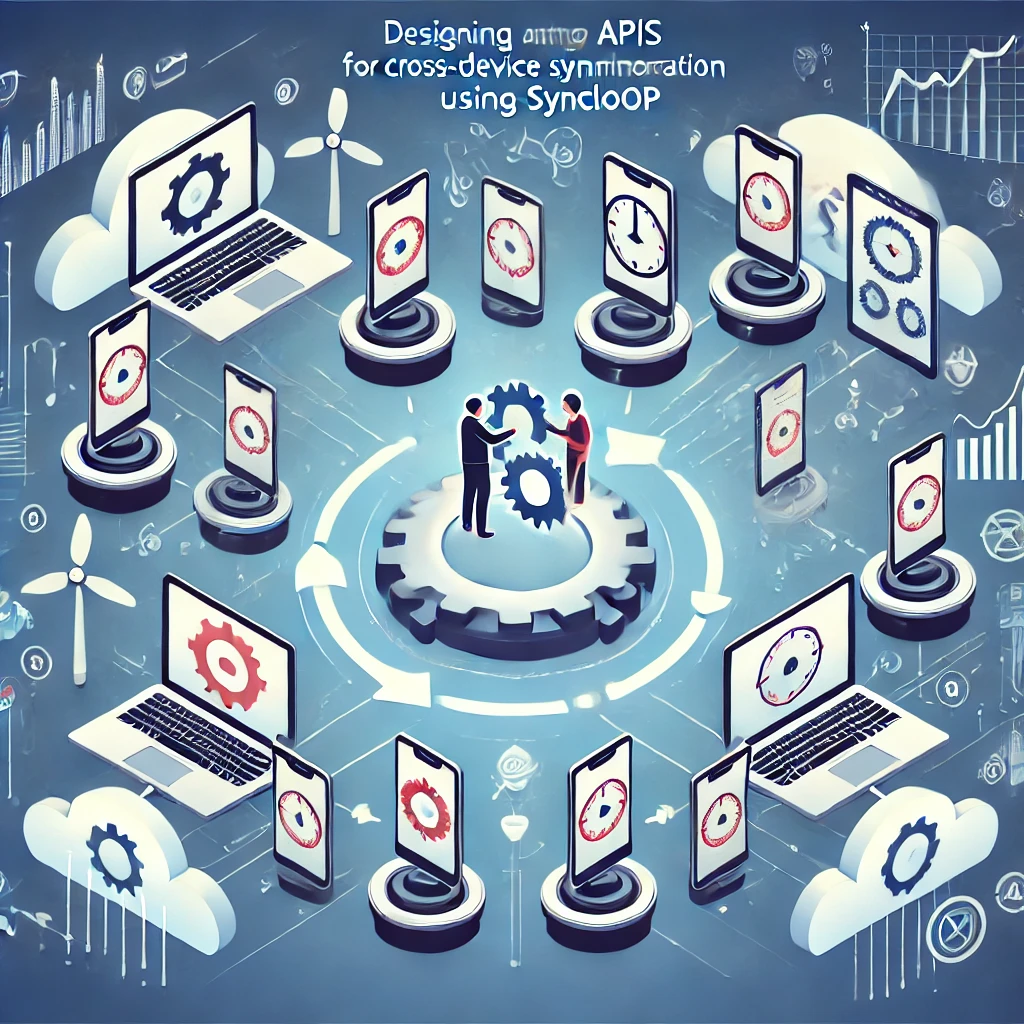Designing APIs for Cross-Device Synchronization Using Syncloop

Syncloop provides tools to simplify the design and management of APIs for cross-device synchronization, offering features like real-time data handling, workflow automation, and conflict resolution. This blog explores how Syncloop enables efficient cross-device synchronization and shares best practices for building scalable and reliable APIs.
The Importance of Cross-Device Synchronization
APIs for cross-device synchronization help:
- Maintain Data Consistency: Synchronize data in real time across multiple devices.
- Enhance User Experience: Provide a seamless experience by ensuring all devices are up-to-date.
- Enable Real-Time Collaboration: Facilitate shared access to data and applications across devices.
- Support Offline Access: Allow users to work offline and sync changes once reconnected.
- Improve Scalability: Handle increasing numbers of users and devices efficiently.
Challenges in Cross-Device Synchronization
- Real-Time Requirements Ensuring minimal delays for a consistent user experience.
- Data Conflicts Resolving conflicts when multiple devices modify the same data simultaneously.
- Offline Support Managing data synchronization when devices go offline and reconnect.
- Scalability Supporting a growing number of devices and data streams.
- Security and Privacy Protecting data during synchronization and ensuring compliance with regulations.
How Syncloop Simplifies Cross-Device Synchronization
Syncloop provides robust features to address these challenges:
- Real-Time Data Sync Handle data updates and notifications with minimal latency.
- Conflict Resolution Automatically detect and resolve data conflicts with customizable rules.
- Workflow Automation Automate synchronization workflows, including retries and offline-to-online transitions.
- Scalable Architecture Support large-scale synchronization across multiple devices and users.
- Security Features Implement encryption, authentication, and access controls to secure data.
- Monitoring and Analytics Track synchronization performance and identify bottlenecks with real-time dashboards.
Steps to Build Cross-Device Synchronization APIs with Syncloop
Step 1: Define Synchronization Requirements
Identify key use cases for your synchronization API, such as:
- Syncing user preferences across devices.
- Real-time messaging and updates.
- Collaborative document editing.
Step 2: Design API Endpoints
Use Syncloop to define endpoints for synchronization workflows, such as:
- /sync/pull: Retrieve the latest updates from the server.
- /sync/push: Send local updates to the server.
- /sync/conflict: Handle and resolve data conflicts.
Step 3: Automate Sync Workflows
Leverage Syncloop’s workflow automation tools to:
- Detect changes in data and trigger updates.
- Sync offline changes automatically when devices reconnect.
- Apply conditional logic for conflict resolution.
Step 4: Implement Security Measures
Use Syncloop’s security features to:
- Encrypt data in transit and at rest.
- Authenticate API requests using tokens or multi-factor mechanisms.
- Enforce role-based access control to protect sensitive data.
Step 5: Optimize for Scalability
Configure Syncloop to:
- Handle high data throughput and large numbers of concurrent connections.
- Distribute traffic across multiple servers for load balancing.
- Monitor system performance to optimize resource allocation.
Step 6: Test and Validate
Simulate real-world scenarios using Syncloop’s testing environment to:
- Validate synchronization workflows under different network conditions.
- Ensure seamless conflict resolution for simultaneous updates.
- Test scalability and performance under peak loads.
Best Practices for Cross-Device Synchronization
- Design for Real-Time Updates Optimize workflows for minimal latency to enhance user experiences.
- Enable Offline Support Implement caching and delayed sync mechanisms for offline functionality.
- Implement Conflict Resolution Use Syncloop’s customizable rules to handle data conflicts effectively.
- Monitor Continuously Track synchronization performance and resolve issues proactively using Syncloop’s monitoring tools.
- Prioritize Security Protect user data with strong encryption and access controls.
Example Use Case: Messaging Platform
A messaging platform uses Syncloop to enable cross-device synchronization:
- Real-Time Updates: Ensures messages sent on one device appear instantly on others.
- Conflict Resolution: Resolves conflicts when multiple devices edit the same draft.
- Offline Sync: Stores messages locally and syncs them when devices reconnect.
- Scalability: Handles increased traffic during peak hours seamlessly.
- Monitoring: Tracks sync performance and resolves latency issues.
Benefits of Using Syncloop for Cross-Device Synchronization
- Enhanced User Experience: Deliver seamless, real-time updates across devices.
- Improved Reliability: Ensure data consistency with robust conflict resolution and offline sync support.
- Scalable Solutions: Support growing user bases and device connections effortlessly.
- Secure Operations: Protect sensitive data with advanced security features.
- Actionable Insights: Use analytics to refine workflows and optimize performance.
The Future of Cross-Device Synchronization
As users increasingly rely on multiple devices for work and personal activities, cross-device synchronization will remain a vital feature in modern applications. Syncloop equips developers with the tools to build efficient, scalable, and secure APIs, ensuring seamless data sharing across devices.
Image Description
A conceptual illustration showcasing Syncloop’s tools for building cross-device synchronization APIs, featuring real-time updates, conflict resolution, and workflow automation. The image highlights seamless data sharing across multiple devices.
Back to Blogs